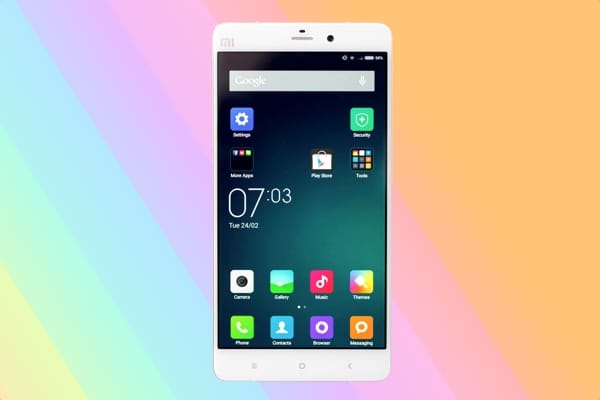The best smartphone you've never heard of - Xiaomi's Mi Note

The smartphone industry undergoes huge changes every few years, and even one-time giants have sadly been dethroned: Sony has almost given up on smartphones, HTC is struggling, and Nokia, once the largest phone manufacturer in the world, exited the business last year. But against all the odds, there are several innovative young companies that have beaten the odds and achieved enormous success in just a few years.
Xiaomi: the Apple of China
For the unfamiliar, Xiaomi is a Chinese firm founded in 2010 that has become one of China’s smartphone success stories, partly thanks to emulating Apple’s successful formula from its marketing and product strategy, to its hardware designs which many would claim have been ‘borrowed’ (Sir Jony Ive is not enamoured by the alleged copycat antics however). But the main reason for Xiaomi’s success is that it’s currently making some great products (with remarkably reasonable prices). With a valuation of more than $40 billion, Xiaomi must be doing something right…
One of Xiaomi’s most recent products in the Mi Note, the company’s flagship phablet smartphone for 2015. However, it isn’t even available in the UK or US, and the majority of people outside Asia haven’t even heard of it, or the company.
Mi Note demonstrates Xiaomi’s expertise
The Note is really a showcase product and if it does well this year, there might be a UK release date sometime in the future. But for now, we’ll have to make do with just a taster of what might be to come one day.
The Note could be likened to a cross between an iPhone 5 and Galaxy Note, with some of the company’s own ideas thrown in for good measure. The design and overall appearance is cohesive and works well – there are large glossy surfaces on the front and back with a metal edge. The sides taper in on the rear, which makes it stand out from just about every other large and rectangular phone. Its premium appearance might come as a surprise, as it certainly looks and feels like a well made and expensive device.
Design
The Note is attractive, but it doesn’t quite have that certain something that makes it a truly great design. Perhaps it’s harder to stand out and make an impact these days, but if you remember the groundbreaking phones from the past (like the iPhone and perhaps the first RAZR), this phone doesn’t quite have it. The company has pretty much taken the best elements though from some of today’s phones – such as laser-drilled speaker holes and the attractive sandwiching of glass and metal. A few years ago, this would have been groundbreaking, but today it’s impact is lessened.
In terms of the display, it’s 5.7-inch LCD has a 1080p ‘full HD’ definition with 386 pixels per inch. That’s not as high as some of today’s phones from LG and others, but we’ve now reached the point where it’s fairly hard to tell the difference between screen resolutions among the high-end devices.
Specs
While the Mi Note is a well-specced phablet with impressive specs, the camera is one of the few areas that lets it down. It’s not actually bad, but images taken on it look a little washed out compared to an iPhone 6. The note has a Sony 13 megapixel sensors, as well as optical image stabilisation, High Dynamic Range (HDR) and a special burst mode that’s activated by the shutter button.
The Note has a 2.5 GHz Snapdragon CPU and a generous 3 GB of RAM (in comparison, the iPhone 6 has just 1 GB, though that’s probably helped by the optimisation Apple has done to reduce memory usage), which is in line with other top-spec phones.
You may be wondering whether Android apps and Google services work properly on the Note. Even though the term Chinese Android smartphone induces worry in a lot of consumers, all of Google’s apps and services are supported on the Notes sold outside China, as well as Google Play. That’s perhaps the most important operating system consideration for any Chinese vendor that wants to expand its reach globally and reach new customers.
As far as Android goes, the Mi Note comes with the company’s own Android skin (on top of KitKat, with Lollipop on the way) called MIUI, which is simple and clean, but borrows concepts from other devices that you’ll already be used to. It’s skinned quite heavily, but tastefully done with smooth transitions and effects that don’t detract from the experience.
MIUI in fact feels simpler than plain Android and still allows users to customise hundreds of features. There’s even a theme store that allows you to skin almost every aspect of the UI, such as the lock screen and icons.
It’s worth mentioning that there are a few very obvious references to Apple in the version of MIUI used by the Note. The folder icon for one is almost identical, as well as the red badges that show up on apps with new notifications.
Final words
The Mi Note may not be everyone’s cup of tea, but it’s received very favourable reviews by the tech press and is a sign of great things to come from the five year old company.
It may be a while before Xiaomi releases phones in the US and the UK – at the moment it’s unlikely that operators would offer a brand that’s so unknown, but the price might be tempting enough alone. In China, the 16 GB version sells for less than the equivalent of £250 – and that’s a lot of phone for the money.







